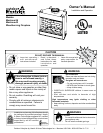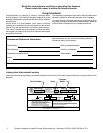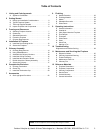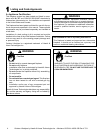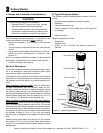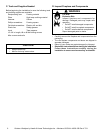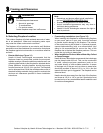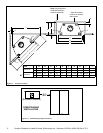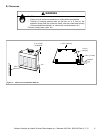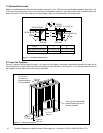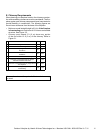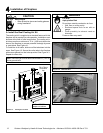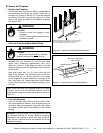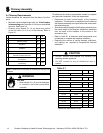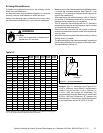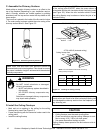Special offers from our partners!

Find Replacement BBQ Parts for 20,308 Models. Repair your BBQ today.

Outdoor Lifestyles by Hearth & Home Technologies Inc. • Montana US-CAN • 4039-156 Rev K • 7/11
5
2
Getting Started
A. Design and Installation Considerations
Draft is the pressure difference needed to vent replaces
successfully. Considerations for successful draft include:
• Location of replace and chimney
Check building codes prior to installation.
• Installation MUST comply with local, regional,
state and national codes and regulations.
• Consult insurance carrier, local building inspector,
re ofcials or authorities having jurisdiction about
restrictions, installation inspection, and permits.
CAUTION
When planning a replace installation, it is necessary to de-
termine the following information before installing:
• Where the fireplace is to be installed. See Sections
3 and 4.
• The vent system conguration to be used. See Sections
5 and 6.
• Framing and nishing details. See Sections 3, 6 and 8.
• Whether optional accessories are desired. See
Section 12.
Moisture Resistance:
This outdoor replace will shed moderate amounts of water,
but is not waterproof. Water and condensing water vapor
may enter the chase under certain conditions.
The replace will not perform as an exterior wall. Moisture
penetration must be considered for construction that places
the replace in structure walls or on moisture sensitive sur-
faces.
When installed on exterior walls: Hearth & Home Tech-
nologies recommends that the replace chase be con-
structed outside the structure’s weather envelope. Where
the platform meets the wall, use a ashing detail similar to
that required for attached decks. Chase platforms, including
hearths should slope away from the structure at 1/8 in. to
1/4 in. per foot. The replace can be shimmed level.
When installed on surfaces where water may collect or
cause damage: Hearth & Home Technologies recommends
that a drainage pan be placed under the unit. This can be
constructed of metal, adhesive polymer membrane (such as
ice and water shield) or other suitable materials. A means of
drainage out of the pan such as tubes or weep holes should
be provided. A slope of 1/8 in. to 1/4 in. per foot towards
the drain port is suggested. The replace can be shimmed
level.
Hearths should slope away from the front of the replace
and chase at 1/8 in. to 1/4 in. per foot. Spark strips must be
on top of any combustible hearth materials used for moisture
management.
B. Typical Fireplace System
The Outdoor Lifestyle replace system consists of the fol-
lowing:
• Fireplace/integral grate/dual cooling air system
• Refractory
• Chimney termination cap
• Chimney system (SL1100 series pipe is NOT approved
for Canada)
• Hearth extension
Optional components include:
• Glass doors
• Weather cover
• SLA10 11-10 in./279-254 mm Adapter (required in
Canada)
Termination Cap
Chimney System
Refractory
Integral Grate
Hearth Extension
SLA10 not shown
Figure 2.1 Typical Fireplace System



